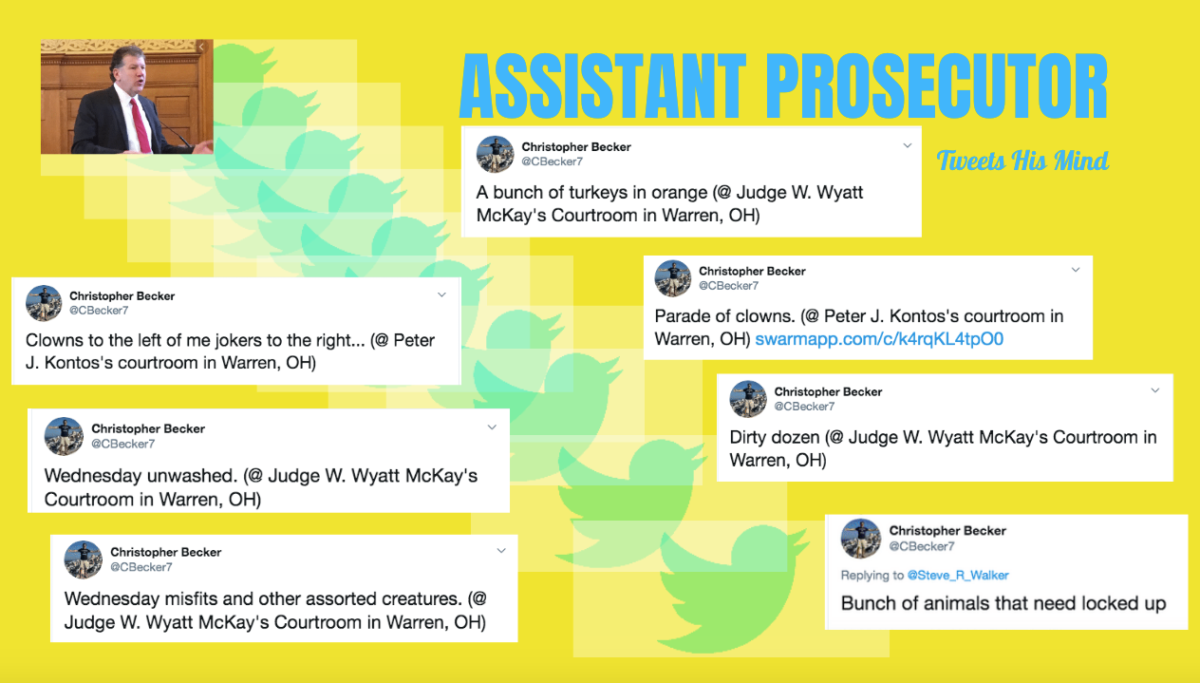Matthew Burroughs was an aspiring rapper and illustrator in Ohio who wanted to start a business but struggled to make a living. He was gentle with kids and did not like cops. His life ended in a way that has become increasingly common for Black men — dying in a hail of police gunfire.
In mid-September, the county prosecutor declined to charge the officers involved, but in the face of unprecedented public criticism, the case has now been referred to the Department of Justice (DOJ). The assistant prosecutor who was in charge of the review of the investigation has been undermining any appearance of propriety and professionalism in the prosecutor’s office with disturbingly racist and hateful tweets aimed at defendants.
Matthew Burroughs Shot to Death in a Still Car
On January 2, 2019, police in Niles, Ohio, were alerted to a Black male who had fled the courthouse as a probation officer tried to stop him. Several officers followed Matthew Burroughs to his apartment complex. Within a few seconds, his car was boxed in. Officer Chris Mannella was standing in front of Burroughs’s car with his gun drawn, yelling for him to stop. Burroughs put the car in reverse, but there was a police cruiser directly behind him. He put it back in drive, wanting to get away, but Mannella was still near the front passenger side fender, partially blocking the way. Less than 10 seconds elapsed between police apprehending his vehicle and when the shooting started.
Officer Mannella fired first — three shots through the windshield, hitting Burroughs in the chest. Five more shots came through the back window from Officer James Reppy. Burroughs slumped over with his foot on the brake and the car, which police say he used as a weapon, completely still.
The cops said that Burroughs would have seriously injured Mannella if he wasn’t stopped — despite the fact that he was unarmed. There was one witness who saw the shooting, a maintenance worker for the complex, and two others recorded the moments directly after the shots rang out with their phones. The maintenance worker, who tried to avoid being questioned for fear of losing his job, admitted to the Ohio Bureau of Criminal Investigation that he had talked off the record with a Niles officer before giving his statement, and that he was never asked his opinion of the shooting or whether he thought Burroughs’s car posed a serious threat to officers.
The bystander videos showed Burroughs’s car stopped, surrounded by officers in a state of extreme agitation. All guns were drawn. Everybody was yelling at Burroughs and at each other. “Crossfire! Crossfire!” one yelled, alerting the others not to shoot for fear that they’d hit an officer on the other side of the vehicle. Within seconds, most of the officers activated their bodycams, which they had forgotten to do in the heat of the moment.
One officer busted out the passenger side window. Another opened the driver’s side door and jerked on Burroughs’s arm. An officer behind him spoke up, “He’s out!” Burroughs’s body was pulled, his foot came off the brake, which sent the car smashing into a wooden fence and into a parked car.
The local media botched the story from the get-go. The Tribune Chronicle seemed to blame Burroughs’s girlfriend for calling the police two weeks earlier during a domestic disturbance, writing, “[she] did not realize it could trigger events that resulted in his death.” Meanwhile, The Vindicator dug into Burroughs’s past run-ins with police, which distorted the public dialogue and which the paper eventually took down. Local journalists quoted public officials who didn’t know what happened, and police who were desperate to hide everything. Authorities initially refused to release the bodycam videos, which left the public discussion in a downward spiral of anger and infighting.
An Openly Biased Assistant Prosecutor Takes Over
On September 13, Trumbull County Prosecutor Dennis Watkins announced that he would not charge the officers, but released the bodycam videos the public had spent nine months begging for. The videos showed exactly what many Black residents suspected: The victim did not pose an immediate threat of serious bodily harm to anyone. Within days, locals staged a protest march that ended in front of the Niles Police Department.
The prosecutor also released a news brief that expressed sympathy for the stress suffered by officers, while casting their victim as a murderous criminal intent on killing cops. Treating defendants like sub-humans without the presumption of innocence seems to be part of the culture of the prosecutor’s office. On Twitter, Watkins’s First Assistant Prosecutor Chris Becker ridicules defendants on a weekly basis, calling them whackos, turkeys, fools, clowns, jokers, unwashed and dirty creatures, and terrible people, even tweeting pictures of them and commenting on their poor fashion choices, as they sit in belly cuffs and orange scrubs, hoping for a fair trial.
Assistant Prosecutor Becker was in charge of the review of the case, the outcome of which was essentially preordained, especially considering Becker’s publicly stated distaste for the “upside-down world” where police are held accountable and his dislike for “snowflake” victims of police brutality, as well as his open contempt for African American “animals who need to be locked up.”

Mark Godsey, director of the Ohio Innocence Project and a law professor at the University of Cincinnati, recently published Blind Injustice, a book delving into prosecutorial attitudes and how this type of dehumanization results in injustices.
“I find the tweets disturbing,” Godsey told Truthout in an email. “Prosecutorial power is immense, and can really impact lives and families, and thus, should be wielded maturely and carefully. These tweets reflect a dehumanizing mentality that is troubling, but sadly, not uncommon.”
On September 15, Lawrence Mitchell, a former DOJ investigator with 25 years of experience, criticized the decision by Watkins to absolve the officers, as well as the biased tone of the prosecutor’s brief. He asked, “Why would Burroughs’ foot be on the brake if he was speeding towards officers [as] in prior statements on this incident?”
Associate Professor Brian Rizzo, a retired New York City Police Department officer now at Westfield State University, carefully examined the videos and the report, subjecting it to the standard of “objective reasonableness” put forth in Tennessee v. Garner and Graham v. Connor, the leading cases on police use of force.
“Officer Mannella’s response to the threat posed was neither, ‘logical, reasonable, or necessary,’” he told Truthout in an email.
The “logical, reasonable and necessary” standard is listed in the Niles Police “Response to Resistance/Firearms” policy, which he also criticized because nowhere does it mention de-escalation but instead, “instills in the officer that ‘resistance’ is key to using force.”
Rizzo went on, “The shooting is different than Becker’s tweets, but I think both come from the same underlying attitude, which is resistant to reform. Watkins, who has been in his position since 1984, sets the tone of the office. Although officers of the court are supposed to avoid even the appearance of bias, with Chris Becker, the bias is explicit. Becker’s racist overtones in his tweets are one thing, but he wants people to know he’s a prosecutor, a family man, and a racist, who, if Watkins retires, will be a suitable loyalist to maintain the ‘tough on crime’ status quo.”
On September 21, Watkins referred the case to the DOJ Civil Rights Division for review, saying apparently without irony, “[The DOJ] are doing the best they can to ensure the truth comes out and justice is served.”
Join us in defending the truth before it’s too late
The future of independent journalism is uncertain, and the consequences of losing it are too grave to ignore. To ensure Truthout remains safe, strong, and free, we need to raise $46,000 in the next 7 days. Every dollar raised goes directly toward the costs of producing news you can trust.
Please give what you can — because by supporting us with a tax-deductible donation, you’re not just preserving a source of news, you’re helping to safeguard what’s left of our democracy.
